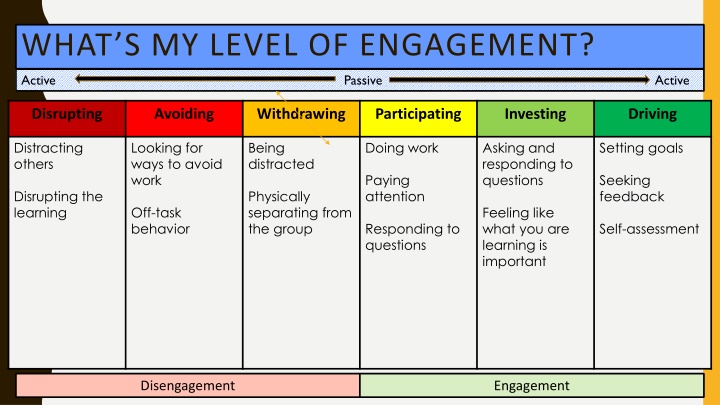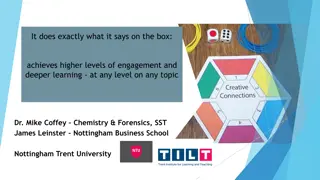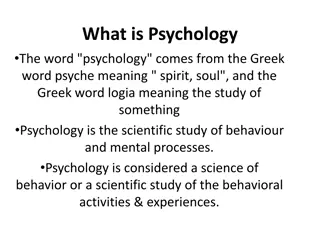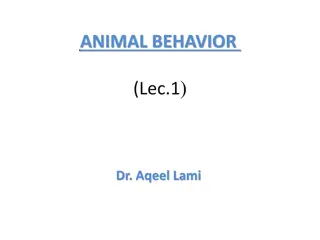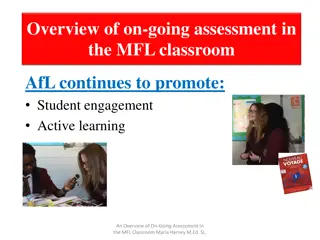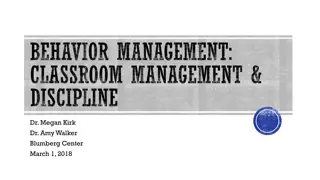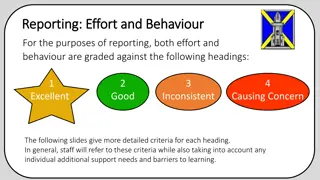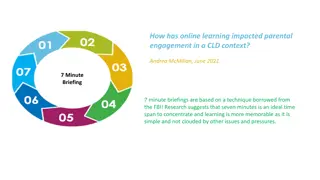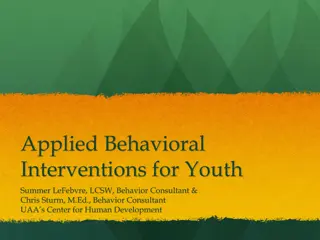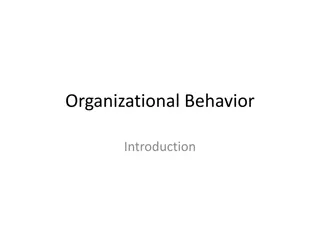Levels of Engagement in Learning Behavior
Understanding different levels of engagement in learning behavior, ranging from active participation to avoidance and disruption. Each level is described with examples, such as participating by paying attention and investing by seeking clarification when needed. Recognizing these behaviors can help educators better support students in their learning journey.
Download Presentation

Please find below an Image/Link to download the presentation.
The content on the website is provided AS IS for your information and personal use only. It may not be sold, licensed, or shared on other websites without obtaining consent from the author.If you encounter any issues during the download, it is possible that the publisher has removed the file from their server.
You are allowed to download the files provided on this website for personal or commercial use, subject to the condition that they are used lawfully. All files are the property of their respective owners.
The content on the website is provided AS IS for your information and personal use only. It may not be sold, licensed, or shared on other websites without obtaining consent from the author.
E N D
Presentation Transcript
WHATS MY LEVEL OF ENGAGEMENT? Active Passive Active Disrupting Avoiding Withdrawing Participating Investing Driving Distracting others Looking for ways to avoid work Being distracted Doing work Asking and responding to questions Setting goals Paying attention Seeking feedback Disrupting the learning Physically separating from the group Off-task behavior Feeling like what you are learning is important Responding to questions Self-assessment Disengagement Engagement
DISRUPTING Description Examples - Unmutes their mic and says random off-topic comments, sings goodbye song throughout lesson - Makes sounds during learning, voice, rhythm sticks - Puts face up close to the screen and makes faces. - Gets distracted from the lesson and distracts friend or teacher. - During group work, starts talking about something that is not about the work - Comes back to class and makes an announcement - Brings toys and refuses to put them away Distracting others Disrupting the learning
AVOIDING Description Examples - Mutes mic, turns off video and walks away to do something else - Plays with pets, toys, siblings - Gets up and walks away from device - Leaves to use restroom to avoid work - Cries and says they are sick - Plays with math, HWT, art, writing materials - Falls out of chair and says they are hurt - Breaks pencil so they can go sharpen the pencil Looking for ways to get out of doing work Off-task behavior
WITHDRAWING Description Examples Looking for ways to get out of doing work - Picks up a book and starts flipping pages - Puts head down and pretends to sleep Off-task behavior - Does something else important so they don t have to participate in the work - Cries even when parent coaxes - Sits and stares absently at screen - Looks over to family members - Stands on or spins in chair.
PARTICIPATING Description Examples - Pays attention to the teacher, so is able to answer the questions Doing work - Follows teacher directions Paying attention - Gives thumbs up, shows emotion card, watches signals - Brain is thinking about the lesson - Listens to friends when they share. - Joins in on music and movement activities.
INVESTING Description Examples - Ask when you don t understand what the teacher is modeling. Hold up yellow or red card Asking questions Feeling like what you are learning is important - Ask a question to get to know the topic more - Care about the characters in the story, retell - Listens to when the teacher talks about the objective or my job in the lesson - Helps a friend who needs help with an answer. - Think about how the lesson relates to me/life - Returns asynchronous work
DRIVING Description Examples Setting goals - I want to look at the 2 characters again so I can retell the story, Seeking feedback - Ask the teacher for time to figure out what your error was Self-assessment on a math problem. - Asking yourself at the end of the page what just happened. - Ask if you can teach back what you learned. - Seeks feedback during break.
